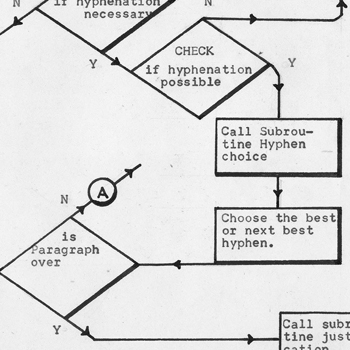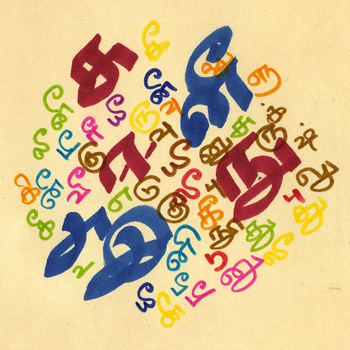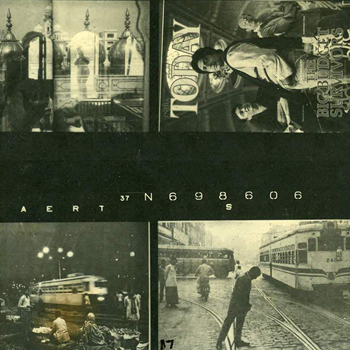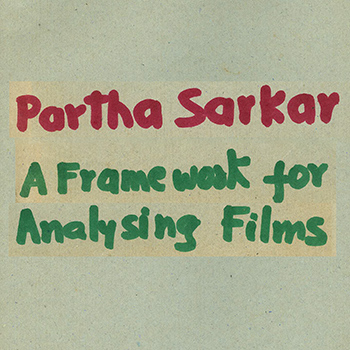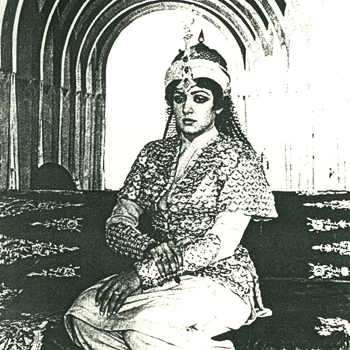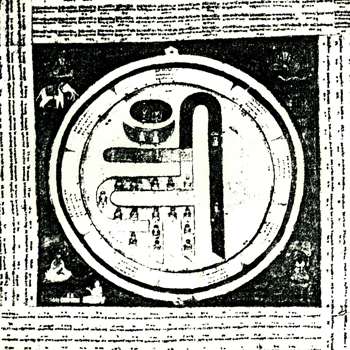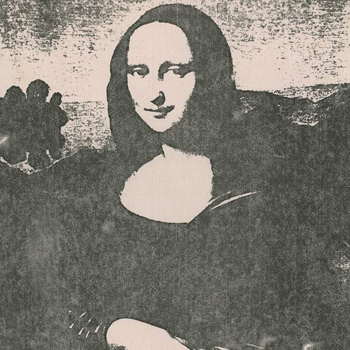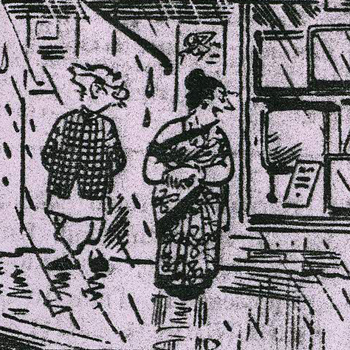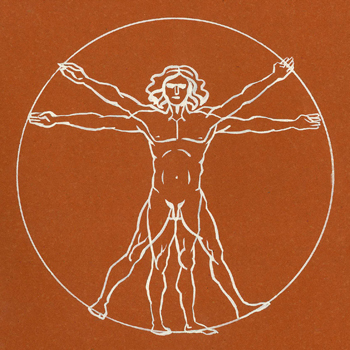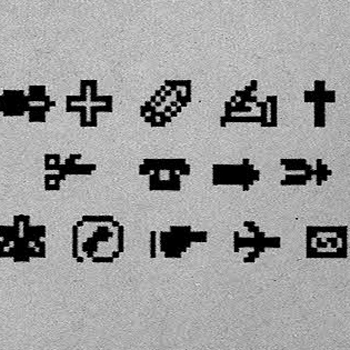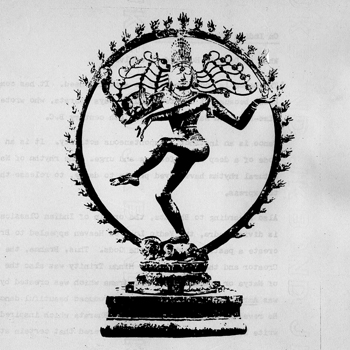M.Des Communication Design 1979-1988
Batch 1984-1986
(8 items)
Batch 1985-1987
(8 items)
Batch 1986-1988
(4 items)
M.Des Communication Design 1979-1988
1984-1986
(8 items)
by Khullar S
Printing, the 530-year-old process of reproduction, is a well-established industry today. From the days when a printer did the jobs of a typographer, publisher, machine operator, and proofreader, today the jobs have been categorised and specialised. A specialist handles a specialised job. A proofreader, for example, is a language expert (perhaps a graduate student) who does the correction work. He also takes care of hyphenation.
The proof reader knows the dos and don'ts of hyphenation, and in a printing setup, he is the final authority on it. He is, however, free to use a standard dictionary in case of doubt. Hyphenation is then perhaps a simple problem, and the following is a perfect solution: lets see
Information transfer has become of bloodlike importance in the body of modern business and industry. The new technology has made information transfer a faster and easier process. As a result, information processing has become faster to keep up with the former. Now, a parallel change has occurred in the print industry, certainly as far as the printing of news is concerned. More and more news from faraway places is available, so there is a need to process this news as quickly as possible, print it, and send it to the readers. A small delay and the news will be stale (radio and television are certainly faster, but print media still has a long way to go). Therefore, there is great pressure to reduce the processing time involved in printing.
by M S Athavale
Architects or Graphic designers entering the field of signage design will soon realise that there are many ways to fabricate even the simplest of signs. By becoming thoroughly familiar with the basic materials and techniques, they will be able to select and specify the most appropriate material for a particular sign system. By understanding basic joinery and construction details, they will be able to guide construction workers and design some very effective details to suit their respective conditions.
Understanding basic joinery and basic constructional details will enable architects or graphic designers to specify the right construction technique for an already selected material according to the function of the sign. The right technique, when properly used, can speed up the fabrication process, reduce cost by saving time, and produce a superior end product.
The purpose of this handbook is to present, in a concise format for easy reference, all parameters involved in the construction of a sign. The emphasis is placed on a systematic approach to tackling the task by providing checklists with relevant details and visual aids.
by Prashant Agarwal
Films have entertained Indians for the last eighty years. They have been the easiest and cheapest form of entertainment available for the masses of India. The film medium is an industry by itself. One of the largest industries in India.
A lot has been written about the Indian film industry. Its vastness, the number of films made, and the variety People have written about the producers, the directors, the actors, and the technicians. They have explored the history of films since their inception in the early part of the century. But no one has ever given a thought to the media and the people who helped to advertise and publicise these films. Those people who blew up these film personalities into super heroes Presenting the films in a highly glamourized form.
These people, who never reached the limelight of the film industry and worked lifelong in forgotten concerns, are the ones who, through their art, brought films to the masses.
No one ever tried to find out how these people worked, what they did, or what their contribution to the film industry was. This project is an effort to study a part of the film's advertising. To probe into the history of Hindi film posters and find out the design changes and trends through the years.
by S. Rama
The Tamil language is of ancient antiquity, and the chronology of its evolution from the proto-dravidian through the proto-South Dravidian spans several millennia. The Tamil script is relatively more recent.
The script of a language is largely determined by various factors, and its evolution has a bearing on the interaction of such factors. One has to take note of the geographical and topographical features of the regions where the writings are available, the materials used for engraving or writing records, the chronological factors, the political, religious, and social influence of the age, and so on.
The systematic study of the scripts is known to archaeologists as paleography. We have a rich collection of writings on rocks, metals, and palm leaves. A study of the numerous inscriptions in different regions reveals how the scripts in the various regions differ not only due to differences in the tools and surfaces but also due to the whims and tastes of the scribe and sculptor and to political, religious, and social factors of the period.
by Shaibani Azam
Comic art is a phenomenon of our times, widely read and practised. Considering that it reflects, even sets the trends of the times, it is important to discover, or rather, state, what comics are saying and how they are saying it.
In this project, an attempt was made to identify and define the means by which comic art attracts us. This project was initially titled 'Educational Content of Comic Art'. The term "educational art" was dropped because it was decided that the purpose would be best served by studying the art form as a whole. The term was restrictive in the sense that everything could be regarded as educational or not, depending on whether one means educational as 'schooling' or educational as informative. It was preferred not to define it as either, and therefore exploration could be carried out in directions that may not have evolved if one had stuck to "educational content.
The first chapter deals with comic art in general and lists some of its prominent features. The second chapter attempts a categorical analysis of content with an identification of the visual devices that prompt a category.
by Sridhar M Rangaihn
The truth, as is often said, is half-concealed and half-revealed, and hence closer acquaintance and association are needed to appreciate it in all its beauty. The artist, in man, feels it, is inspired by it, and feels happy and elevated in conveying to others his experience of the golden touch of art. When this process resolves itself into a well-ordered and accomplished fact, art turns over its conquests to science and sets forth to explore unknown regions in the Land of the Beautiful.
In real life, every experience may not be pleasant or enjoyable. The medium of art makes it so. But art is not art per se. It has a certain communicative value. It cannot remain mystic and obscure. It has to transcend and reach the people, touch them, enrapture them, and educate them. For this, it has to be concrete and tangible.
It has to satisfy a certain standard of communication. Towards this end, critical judgements were formed, and from the theories that germinated, concepts were formed. In Vedic times, and for quite a few centuries later, too, the arts were looked upon from a religious viewpoint. Arts were executed (performed) almost as a ritual. Strict adherence to the theories, principles, and concepts was considered a must. These concepts became the guidelines for judging and evaluating the perfection and beauty of a work of art.
In this report, an attempt has been made to present a few concepts from one or two aestheticians in the different art fields. India has a rich cultural heritage and has produced numerous artists of great merit as well as aestheticians of profound knowledge. It requires an exhaustive study, which is beyond the scope of this report. This report is conceived as a brief glimpse of Indian aesthetics.
by Suhail Abbasi
We all observe people at all stages of life everywhere: at home, at bus stops, railroad stations, and markets. By watching others almost every time, we learn a lot about them and eventually about ourselves. At times we register a mental note of a certain gesture in our minds; we wonder where the gesture originated, but seldom do we make an attempt to go beyond that. We feel differently in different companionships, and our feelings change accordingly, but we don't know why. For instance, we say, "I feel relaxed in the company of Mr. Malhotra'' or '' I feel uncomfortable in Mrs.Laxmi's house." If only we get a bit curious, we can learn how feelings are aroused and how and why we act the way we do.
Just a few years ago, an exciting science was uncovered and explored. It was called BODY LANGUAGE. Both its written form and scientific study have been labelled as KINESICS. It is based on the behavioural pattern of non-verbal communication. Each person develops a special behavioural pattern. If we study his behaviour clearly, we can understand him better in our next encounter. It is also possible to see beyond the surface of the event when he meets or interacts. By learning body language, a keen observer can use his knowledge to transform a boring conversation into an interesting one. The primary goal is to come to a deeper understanding of human interactions and the remarkable predictability of human behaviour.
by Virendra S Rathore
Typography, the printed word, is one of the most important areas of communication and is a fundamentally functional vehicle for transmitting ideas. Typography may be defined as the art of rightly disposing printing material in accordance with a specific purpose, of arranging the letters, distributing the space, and controlling the type so as to achieve maximum reader comprehension of the text content.
Typography was used earlier as just a way of printing a text matter with more emphasis on bringing the content matter across in a more comprehensible way. But in today's world, typography has acquired a much wider visual sense. Typography has become a medium of visual communication. With the Dada movement and, more recently, the onset of concrete poetry, typography has acquired a new dimension in the world of visual images.
Typography at present is not restricted to the printed matter on a page but has extended its definition to projected typography on film, video, and television mediums. Computer-aided typography is yet another field that has assumed prominence in recent times. Laser typography is the vision of the future. Typography as used in different applications has its own styles, limitations, constraints, and analytic values. Each application, so to speak, dictates a different typographic approach. In some applications, the point size or boldness might be more important, whereas in others, the column width, layout, etc. might be more important; in yet another, the grey value of the printed area; and so on. This project is an investigation into different typographic fields with respect to different applications and an analytic review of the parameters of typographic design. Typographic samples have been collected and classified into different fields to facilitate easy understanding. The samples in each field have been analysed with respect to the different parameters involved.
1985-1987
(8 items)
by Bhavana Sheth
by K. Senthilvel
The world of today is a world of images. Humankind continues to reveal the truth in mere images. Photographs teach us a new visual code; they alter and enlarge our motions of what is worth looking at and what we have a right to observe. They are a grammar and, even more importantly, an ethics of seeing. To collect photographs is to collect the world. and television programmes light up the walls and flicker. Movies and go out, but with still photographs, the image is also an object: lightweight, cheap to produce, easy to carry about, accumulate, and store. Photographs really are an experience captured, and the camera is the ideal arm of consciousness in its acquisitive mood.
Photographs furnish evidence. Something we hear about but doubt seems proven when we are shown a photograph of it. In one version of its utility, the camera recorder incriminates. A photograph passes for incontestable proof that a given thing happened. The picture may distort, but there is always a presumption that something exists or did exist that is similar to what is there in the picture. From the object to its image there is ofcourse a reduction *Extracts from "On Photography" by Susan Sontag in proportion, perspective, colour but at no time is this reduction a 'transformation'.Certainly the image is not reality, but at least it is its perfect 'analogon," and it is exactly this analogical perfection that, to common sense, defines the photograph. The act of photography is a gesture of sorts. Most subjects photographed are, just by virtue of being photographed, touched with pathos. To take a photograph is to participate in another person's (or thing's) mortality, vulnerability, and mutability.
by Kiran K Bidwai
Art has a potentially vital role in the learning process of children. The process of drawing, painting, or constructing is a complex one in which the child brings together diverse elements of his experience to make a new and meaningful whole. FOR THE CHILD, ART IS A DYNAMIC AND UNIFYING ACTIVITY.
In our present educational system, most emphasis has been put on the learning of factual information. More and more people are recognising that the ability to learn differs from age to age and from individual to individual, and that this ability to learn involves not only intellectual capacity but also social, emotional, perceptual, physical, and psychological factors.
What a person knows or does not know may have no relationship to creative action. One of the basic ingredients of a creative art experience is the relationship between the artist and his environment. Painting, drawing, or constructing is a constant process of assimilation and projection that involves taking in through the senses a vast amount of information, mixing it up with the psychological self, and putting into a new form the elements that seem to suit the aesthetic needs of the artist at the time.
Man learns through his senses. The ability to see, hear, smell, and taste provides the means by which an interaction between man and his environment takes place. The greater the opportunity to develop increased sensitivity and the greater the awareness of all the menses, the greater will be the opportunity for learning.
by Partha Sarkar
In an essay from 1945, Eisenstein described three levels at which films could be looked at. A long-shot film theory looked at films in order to unravel their political and social implications. The medium-shot film theory focuses on the human scale of the film—its story, its characters, its drama, etc.—while the close-up film theory breaks down a film into its elements and takes a close look at them in order to reveal their contribution to the overall film. Most analysts look at films from the first and second viewpoints; what is ignored is the close-up view, a view that could reveal to us how cinematic variables like editing, sound, light, lenses, camera movements, framing, colours, etc. are being used in harmony to create moods, ambiences, and an expressive power that is purely cinematic. As a consequence, an analysis of Tagore's NASHTANEER and Ray's CHARULATA (Ray's film version of NASHTA-NEER) would have the same tonal values. The reason seems clear: most analysts come from a literary tradition and extend a methodology for literary analysis onto films.
With the growth of semiotics as an important discipline, this is remedied, as semiotics is the study of signs, and with the sign systems for cinema and literature being different, analysis specific to the medium produces different results.
This paper, then, is an attempt to integrate the above-mentioned views and further develop an elaborate framework for looking at Indian films. Mirch Masala is being used as a vehicle for developing this framework. There are a number of reasons for this choice. MIRCH MASALA has been funded by the N.F.D.C. and has been a fair commercial success, though its success is partly due to the TAX FREE' status that it enjoyed. The film uses a lot of commercial idioms and yet maintains a distance from the regular commercial outpourings. Thirdly, Ketan Mehta, the film's director, claims to be politically conscious (CINEMA IN INDIA, Vol. 1), and hence would be conscious of the political implications of the choices that he would be making in the design of the film. And finally, a close-up view does reveal a conscious selection of cinematic variables and their appropriate usage within a framework of classicism.
by S K Singh
It is a common belief that popular cinema is not usually intended to be important or significant - that it is trash because the sole objective behind its production is to make money and provide cheap entertainment. And still, these movies are considered important for the following reasons: that they are capable of influencing people, that they can teach wrong values, that they can cause psychological damage, etc.
The popular films are considered escapist mass entertainment that distracts the poor from the real cause of their misery. There are others who argue with equal zeal that these films play a positive role; these films fulfil the psychological needs of the poor and express concern about the real issues of poverty, crime, violence, communal prejudice, and the institution of family; they also provide a preferable diversion from cockfighting, drinking, and gambling.
In India, more than 800 films are made every year and watched by more than 12 million people every day. The popular television programmes are either based on popular cinema or are imitations of it. The Vividh Bharati radio service transmits music and other programmes from popular cinema for more than 70% of its transmission time.
'What is it that makes 'The Popular Cinema' popular?" is the basic question to be answered through this seminar paper. In general terms, to what extent is popular cinema a reflection of society's interests and 'ways of seeing'? And more specifically, what are the ingredients used in these films that tell us about the society that supports and sustains this kind of cinema? One of the answers offered to the question "Why are Bombay commercial films so popular?" is that the masses seek pleasure and diversion from the daily grind and that they find it in the explosive action and melodramatic emotions of this cinema.
One may ask why look for meaning in a product when neither its makers nor its audience intend for its contents to be regarded as serious or important. Not all movies that are made for the purpose of making money and providing entertainment become commercial successes. So, it is not just the presence of a few 'stars' and 'a formula story' that make a film successful. The cinema, like language, requires its viewers to understand its grammar in order to be able to enjoy it, and the elements of this language are the style, fashion, archetypes, ideas, beliefs, etc. of a particular social reality. The profit motives behind the creation of these films force the producers to produce what they believe the audience will like. According to Pradip Krishnan, 'it is possible to make out a convincing case that it is not the poor audience but the powerful producers and distributors who are manipulated by their perception of what the audience wants."
by V V Vidwans
This study is an attempt to understand the true spirit of Indian art. When one reads the title of this paper, 'Indian Graphic Elements in Layout', one cannot understand exactly what it means. So I am briefly explaining the aims and objectives of this paper. First of all, I am concentrating on the study of composition and layout in Indian miniatures. For that, I will discuss the characteristics and canons of Indian painting, which are based on a specific philosophy and way of thinking. Secondly, what makes the Indian I will try to answer the question, "What are Indian images?" through the analysis of the elements and principles of Indian painting."
Today's Indian art is passing through a state of confusion. Today's artists and designers are imitating either Western styles or traditional Indian styles without understanding the true nature of these art forms, and obviously, their output appears to be of second-grade quality. Unfortunately, today India's contribution to global art is nil. So if one wants to cross this stage, this study will be helpful.
Art is a human activity that is spontaneous but controlled and that involves skill as well as intellect. In a broader sense, art means "being," but normally the usage of this word is limited to human activity. When we talk about design, this above definition sounds more logical. Design pays more attention to the planning and proper execution of the means to create the end product. Traditional Indian art also believes in the same process. So the study of art in Indian culture seems relevant to understanding the nature of art in India.
by Yumnam N Singh
The aim of this study is to understand the various possibilities of an image and its wide spectrum of representivity. An image is not just an image per se. Apart from the figure itself and its meaning, there are other factors like the illustration technique, the style of illustration, and the printing process that add to the dimension of the image.
Along with the development of various tools, the nature of the image has also undergone change. The photographic images, produced by using fine lenses and light sensitive emulsions, are different in tonal values as compared with brush-rendered images. Air compressors with air brushes have brought in fine-finished images whose texture is entirely new. The images produced on computers have a different quality altogether. Over the year, various tools and materials have been used by artists and designers to create various visual images.
When the images are used to convey specific information, the art form is normally called illustration. However, art and illustration can never be separated entirely. Illustration relies heavily on traditional art, skill, and techniques; when we say visual art, it is always associated with painting, sculpture, and other visual images. It is assumed to have less commercial value and be richer in aesthetic value. If we transform the painting into illustrations, it serves the purpose in various areas.
Illustration is commonly taken to mean art in a commercial context, and social and economic influences therefore dictate the form and content of the illustration. Illustrators have always been eager to grasp the opportunities offered by the development of new mechanical aids to improve their skills and widen the scope of their work. In fact, illustration has always been defined as analytical and descriptive drawing, particularly in the fields of science, topography, medicine, and architecture. But the scope and meaning of illustration are fast changing. Illustration is being recognised as art too. In this study, an attempt has been made to study an image and its style, techniques, and process.
by Y N Vivekananda
Cartoons are undoubtedly a very powerful communication medium since they use pictures to communicate and since they blend with the message to be conveyed. It is very interesting to study and analyse the way cartoons have become very effective as a powerful communication medium. The cartoons of R.K. Laxman, which appear every day in the news paper "Times of India," are a natural choice owing to their having been one of the most popular, lasting, and having deep relevance to the every day life of the ordinary citizen.
The cartoons of R.K. Laxman fall largely under the theme of socio-political affairs and therefore deal with the current political situation, economic order, and every day life of the ordinary citizen. As an introduction to the compilation of his cartoons under the title "You said it", R.K. Laxman remarks, "My cartoons are drawn with the object of producing a laugh or at best a smile, but many readers believe that they have a deeper social purpose". But there can be little doubt that his cartoons do more than merely make us laugh. In a very subtle way, we identify ourselves with the environment, situation, and characters that he creates, and we realise that it's all for us and about us.
It is the aim of this seminar to analyse the aspects of visual semantics in his cartoons to better understand how any ordinary citizen identifies the various environments, situations, and characters and their own relationship to them.
1986-1988
(4 items)
by Dipankar Goswamy
by Raghu Kolli
Auditing communications means conducting a comprehensive review of communications in an organization or environment. Communication audits are necessary at various stages for most organizations. A new organization needs to establish communication channels with prospective clients and employees. A fast-growing organization needs to increase their communication and information handling capabilities at various levels to gear up for the future. Stagnant and bulky organizations need to dramatically increase their communication efficiency to cut down on further losses.
This study presents a general framework for carrying out a communications audit. Relevant key terms like information, communication, channels,systems," etc. are defined for uniform interpretation by readers. The proposed framework is woven around four attributes: physical or materials, tools, and equipment (the carriers of information); channels (the direction and flow of messages); noise levels or distortion (the quality of messages); and people (the sources and receivers of information). The framework basically deals with communication as a process of exchanging information. The content or coding of messages, perception, etc., which involves behavioral aspects of people, is an exhaustive subject by itself and beyond the scope of the proposal.
A communication audit could be conducted with specific objectives or within a limited scope and could be used as a basis for a brief to designers, a tool for management decisions, or a control mechanism for communication norms.
The proposed framework is illustrated with an existing situation in a small new organization: the CAD Center at IIT Bombay.
by Rajul Mehta
In India, classical dance is an important facet of the rich cultural heritage we possess. Centuries have shaped the destiny of this terpsichorean art, which has its roots in tradition.
As most Indian classical dance is interpretative, the use of visual symbols is highly pronounced. These symbols are stylized versions of common human symbols. There are different ways in which a single visual symbol can be applied to convey different ideas in a dance style or a school of dance. Besides, each dance style has evolved its own method of using symbolism.
All Indian classical dance styles have evolved from the comprehensive principles, systems, and techniques as expounded in Natya Shastra. Thus, in Part One, after a general discussion about the background, history, and themes of Indian classical dance, the next topic of discussion is the representation of visual symbols, the basic principles, along with explicit dance terminology, and dance speech.
Since the discussion on visual symbols in isolation would be quite ambiguous, Part Two deals with a description of the seven Indian classical dance styles in an effort to emphasize the important aspects and characteristics of each school. This includes the historical and cultural background and the technique. The relations among these sister-dance schools have also emerged in the process. Apart from Bharat Natyam, a description of the repertoire has been avoided in order to cut down on the length of the report.
Dance is a dynamic art. As everything in dance cannot be fully explained in words alone, a demonstration video tape has also been prepared. Because certain things have to be observed, learned, and enjoyed.
by Kavita Appachu
Rapid strides in technology are changing our world. are also changing our attitude toward things. of the West pervades every walk of life in almost every part of the world. One of the reasons may be the hi-tech package offered by the developed nations in the form of products. Underdeveloped nations are losing their identity because of this cultural invasion. What role does culture play in technology? has a very significant role to play because recent developments Each government has brought technology and culture very close, each in the direction of the other.
This is apparent in our country too, where we, a third-world nation, are trying hard to keep pace with the developed nations on all fronts. This manifests itself in our daily lives too, in the kinds of products we use and the way we use them. is a flood of products on the industrial, commercial, medical, and domestic scenes. Time-saving gadgets, space-saving devices, sensitive diagnostic equipment Most of them are the result of foreign collaborations and technology transfers.
It is true that a chair is to be sat on and a grinder grinds, be it in the West or in India. So where does Indianness come into all this, be it in the West or in India? So where does Indianness come into all this? All these statements are justified at a very basic level. Indianness does play a very important role in determining the functions of a product to be used in our country. To find out the extent of this, one has to delve deeper into what Indianness is.
Indianness is an oft-misquoted and misused term today and has come to have a number of connotations. Viewed in a holistic manner, it is probably an outlook or attitude towards life reflected in the way we live, our activities, and our approach to things in day-to-day life. It is ingrained in our subconscious and inherent in our society. Imbibed down the ages, it has its roots in the social, economic, cultural, religious, and political environments that we have lived through down the ages.
